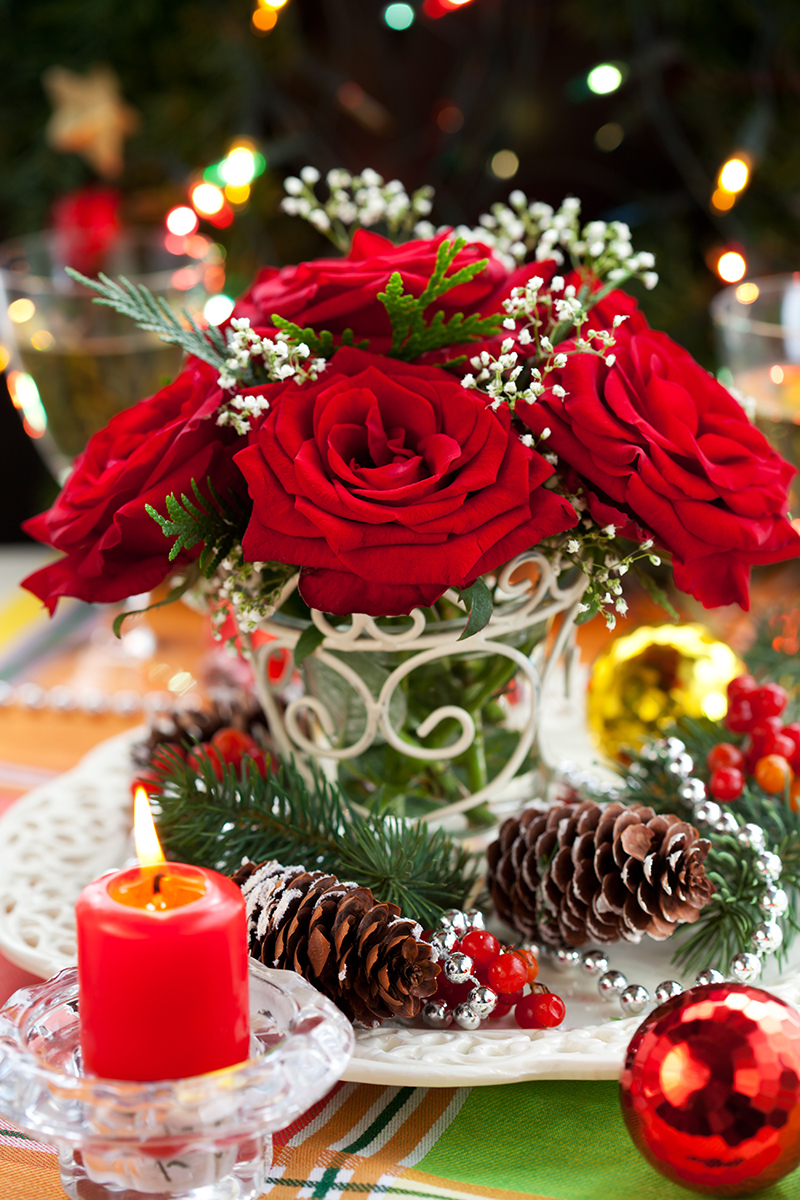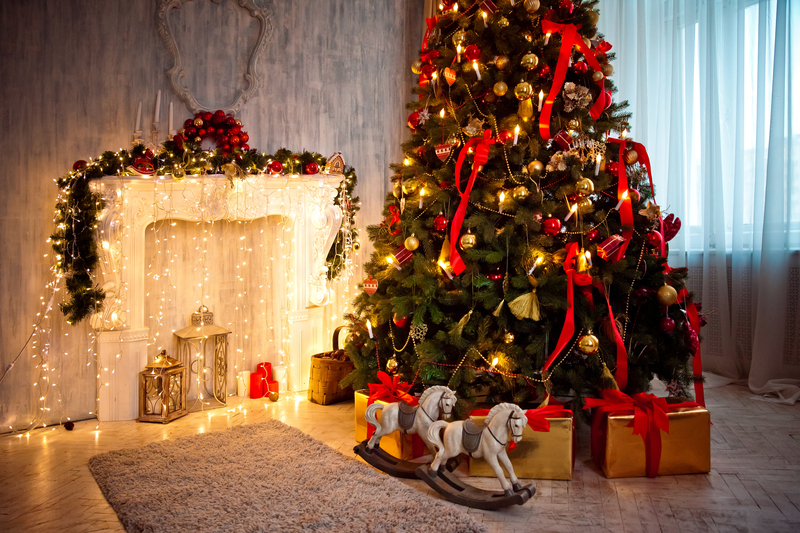Expert Tips for Long-Lasting Poinsettias at Home
Posted on 14/08/2025
Expert Tips for Long-Lasting Poinsettias at Home
Poinsettias are renowned for their vibrant colors and festive charm, often gracing homes during the holiday season. Yet, many plant lovers wonder how to keep their poinsettia plants healthy and beautiful well beyond December. If you're searching for expert care advice for poinsettias, you've come to the right place! This comprehensive guide covers everything from selecting a healthy plant to optimal care routines, ensuring your poinsettias remain lush, colorful, and long-lasting in your home.

Understanding Poinsettia Plants: Key Facts
Before getting into expert tips, let's take a closer look at what makes the poinsettia unique. Known botanically as Euphorbia pulcherrima, poinsettias naturally hail from Mexico and Central America, thriving in warm, bright environments. The familiar "flowers" are actually colored bracts (modified leaves), while the small yellow centers are the real blooms.
- Scientific Name: Euphorbia pulcherrima
- Native Region: Mexico and Central America
- Ideal Temperature: 60-70?F (15-21?C)
- Color Varieties: Red, white, pink, marble, orange, and more
Why Do Poinsettias Lose Their Color?
Many people struggle to keep their poinsettias looking vibrant past the holidays. The main culprit is improper care--especially concerning light, temperature, and watering. By understanding your plant's needs, you can easily prolong the life of your poinsettia and keep it healthy.
Choosing the Best Poinsettia Plant
The path to long-lasting poinsettias starts before you even bring the plant home. Here are some expert tips to select a healthy specimen from the store or nursery:
- Look for vibrant, undamaged leaves and bracts. Avoid plants with yellowing, wilting, or dropped foliage.
- Check the true flowers--the small yellow buds in the center. They should be tightly closed or just starting to open, which signals freshness.
- Inspect the soil. Choose a plant in moist, but not soggy, soil. Dry, compact, or overly wet soil can signal poor care or root rot.
- Test for pests like whiteflies or spider mites on the undersides of leaves.
- Choose plants not wrapped in plastic sleeves for long periods, as this can trap moisture and cause leaf drop.
Expert Care for Poinsettias: Light, Water, and Temperature
The secret to keeping poinsettias thriving at home is creating an environment that mimics their native habitat. Let's break down each critical aspect of poinsettia care.
Optimal Light Conditions for Poinsettias
- Bright, indirect sunlight is essential. Place your plant near an east or south-facing window where it receives at least 6 hours of filtered light daily.
- Avoid harsh midday sun, which can scorch bracts and leaves.
- Rotate your poinsettia periodically to ensure even growth and vibrant color on all sides.
Proper Watering Techniques for a Long-Lasting Poinsettia
- Check soil moisture every few days by inserting your finger about 1 inch deep.
- Water thoroughly only when the top inch feels dry, but avoid letting the plant sit in standing water.
- Drain excess water from the saucer or foil wrapping to prevent root rot.
- Use lukewarm water to protect delicate roots.
Maintaining the Ideal Temperature for Poinsettias
- Keep temperatures between 60-70?F (15-21?C) during the day and no lower than 55?F (13?C) at night.
- Protect plants from cold drafts, sudden temperature changes, and direct heat sources like radiators or fireplaces.
Humidity, Fertilizing, and Other Poinsettia Plant Care Essentials
Promoting Healthy Humidity Levels
Poinsettias thrive in moderate humidity. If your home is dry during winter, especially with heating systems in use, consider these tips:
- Group your plants together to create a microclimate of higher humidity.
- Use a pebble tray with water underneath the pot, but not touching the roots.
- Mist the leaves lightly every few days, preferably in the morning.
Feeding Your Poinsettia
- Do not fertilize when the plant is in bloom.
- After the holiday season, begin feeding your poinsettia every 2-4 weeks with a balanced, water-soluble fertilizer to encourage future growth.
Poinsettias and Safe Handling
While not deadly, poinsettias can cause mild irritation if ingested by pets or children. The milky sap can also cause skin sensitivity in some people.
- Wash hands after handling the plant.
- Keep poinsettias out of reach of pets and young children.
- If sap makes contact with skin or eyes, wash thoroughly with water.
Your Poinsettia After the Holidays: Year-Round Care
If you want your poinsettia to last year-round, follow these advanced care and reblooming tips for poinsettias:
January - March: Maintaining Post-Holiday Health
- Keep up regular watering and light care as described above.
- Remove fading bracts to keep the plant tidy.
- Continue to monitor for pests or disease.
April - June: Pruning and Repotting
- In early spring, cut the plant back to about 6 inches to promote bushy new growth.
- Repot the poinsettia if it's root-bound, using fresh potting soil and a slightly larger pot.
- Begin regular fertilizing as new shoots appear.
July - September: Encourage Healthy Growth Outdoors
- After the last frost, move the plant outside to a shaded, protected location.
- Pinch back stems in July and again in August to keep the plant compact and full.
- Continue watering and feeding as usual.
October - December: Reblooming Poinsettias at Home
Want those signature red bracts again for the holidays? Poinsettias are photoperiodic, requiring specific light conditions to bloom:
- Starting late September or early October, provide 14-16 hours of total darkness each day for 8-10 weeks. Cover with a box or move to a closet from early evening to morning.
- During the day, return the plant to bright sunlight for the remaining hours.
- Continue normal care, adjusting water and fertilizer as the plant resumes blooming.
By mid-December, your poinsettia should reward your patience with beautiful, colorful bracts!
Common Issues and How to Fix Them
Even with the best care, issues can arise. Here are some troubleshooting tips for common poinsettia problems:
Yellow Leaves or Dropping Leaves
- Cause: Overwatering, underwatering, or temperature stress.
- Solution: Check soil moisture and drainage, and ensure stable temperatures away from drafts or heat sources.
Wilting or Soggy Soil
- Cause: Standing water or poor drainage.
- Solution: Remove foil wrapping, ensure drainage holes are clear, and tip away excess water.
Pale or Faded Bracts
- Cause: Inadequate light, lack of nutrients, or bracts aging naturally.
- Solution: Move plant to a brighter area, fertilize as per schedule, and trim faded bracts.
Pest Problems
- Common pests: Whiteflies, spider mites, aphids.
- Solution: Wipe leaves with soapy water or use insecticidal soap; isolate affected plants.
Decorating with Poinsettias: Creative Ideas
Poinsettias can be more than just holiday table centerpieces! To make the most of your long-lasting blooms, try these creative ideas:
- Poinsettia Topiary: Prune to train your plant into a small tree.
- Poinsettia Wreath: Use bracts in a wreath for festive decor.
- Mix-and-Match Arrangements: Combine different color varieties for a bold display.
- Outdoor Festive Planters: Use poinsettias with winter-hardy greens for porches or patios (return indoors for freezes).

Poinsettia Fun Facts and Myths
- Poinsettias are the most popular potted plant sold in the United States, especially in December.
- Contrary to popular belief, poinsettias are not highly poisonous to pets or children--though eating them can cause mild discomfort.
- The red color isn't from the flower, but from modified leaves (bracts).
- National Poinsettia Day is celebrated on December 12 in the U.S., marking the death of Joel Poinsett, who introduced the plant from Mexico.
Conclusion: Enjoying Your Long-Lasting Poinsettias at Home
With proper care, your poinsettias can be more than just a fleeting holiday ornament. By following these expert tips for keeping poinsettias healthy and vibrant, you can enjoy festive color and lively greenery year-round. Just remember:
- Select a healthy, robust plant from the start.
- Provide bright, indirect light and maintain stable temperatures.
- Water carefully, guard against drafts, and fertilize after the holidays.
- Consider advanced care--like pruning and photoperiod darkness--if you wish to rebloom your poinsettia.
Whether you're a beginner or have a green thumb, these guidelines will ensure your poinsettias stay long-lasting, beautiful, and joyous. Happy growing!







